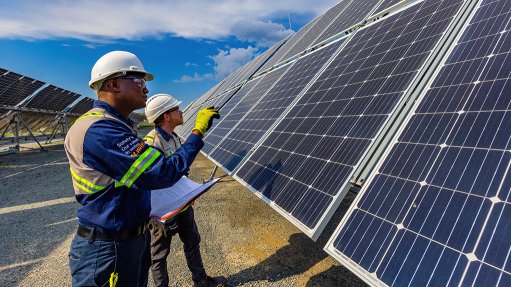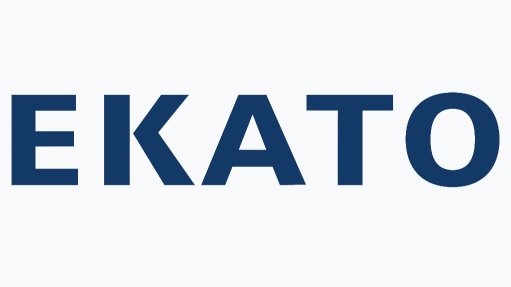Agriculture Master Plan still doable but needs adjusting
Agricultural Business Chamber of South Africa chief economist Wandile Sihlobo has asserted that the implementation of the Agriculture and Agroprocessing Master Plan (AAMP) is still doable. However, it needs to be adjusted and treated as a recovery plan.
Speaking during a webinar on June 20, he noted that many of the issues addressed in the AAMP had become much more complex over the last year and that South Africa would need to adapt it to the current context.
During the webinar – which is part of a series called ‘Think Big’, hosted by financial investment consulting firm PSG and facilitated by journalist Alishia Seckam, which examines some of the most pressing issues impacting South Africa’s economic development – Sihlobo reflected on whether the master plan was still fit for purpose given the heightened level of local and global challenges in the operating environment.
The AAMP was launched on May 12 last year by Agriculture, Land Reform and Rural Development Minister Thoko Didiza. At the time, it was touted as an inclusive growth strategy for the agricultural sector and as a framework to build competitiveness, attract more investment, improve inclusion and create jobs.
The plan is aimed at unleashing the agricultural and agroprocessing sector’s full potential and increasing its current 8% contribution to the national gross domestic product.
The master plan is expected to unlock 10% to 15% growth in gross value-add and to create about one-million jobs in the primary agriculture and agroprocessing sector.
“But it will require close collaboration between all the stakeholders who came together to co-create AAMP – government, labour, private sector and communities – to explore opportunities for all the high-value commodities,” Sihlobo said.
When evaluating the impact of geopolitics, the importance of trade came into focus. Sihlobo made it clear that exports needed to increase to grow this sector and for the AAMP to reach its targets. However, for exports to increase, production needed to expand.
He said that, as an export-oriented sector, it was important to maintain trade relations with South Africa’s most important markets, or risk running at a loss.
Sihlobo broke down the composition of the $12.8-billion in agricultural exports according to market size. At 40%, the African market receives most of South Africa’s agricultural exports. About 27% goes to Asia, 20% to the European Union (EU), 4% to the UK and 4% to the US. Russia is fairly insignificant at about 2%.
“So, although the US is an important market for us, the EU is the primary market that we want to nurture a relationship with,” Sihlobo said.
When we look at expanding production and facilitating enhanced trade outputs, Sihlobo explained that the master plan also sought to unlock currently under-used land.
“We think the South African government currently has close to 4-million hectares of land. Some of it is agricultural and can be brought into full production and nearly 2-million hectares of that land has already been audited by the Agricultural Research Council.
“To put it into perspective, South Africa currently plants about 4.3-million hectares of summer grains and seeds. That number can be increased substantially, for grains, horticulture and livestock, leading to better output for exports and job creation in the process,” Sihlobo noted.
Currently, South Africa exports just more than half of its produce in value terms, which equated to $12.8-billion in 2022.
Poverty and loadshedding were highlighted as key domestic issues that needed to be overcome.
When asked about how South Africa coukd reconcile the issue of food security, Sihlobo pointed out that, although the sector exported about 51% of the food that it produced, this created the funds for vital sector inputs needed for items such as fertiliser, certain chemicals and seeds.
He also pointed out that, just because South Africa was exporting about half of what it produced in value terms, it did not mean that consumers were left without supplies, or that the exports were resulting in an unusual increase in domestic prices.
"The poverty issue that the country has comes from unemployment, so even if you were to drop the price of a food item, if someone has no income, that will still be too expensive for them,” Sihlobo said.
He further added that a large part of the problem related to infrastructure constraints that were curbing the supply to local markets – referring to the roads, electricity issues and water.
Sihlobo pointed out how irrigation was being impacted by loadshedding. The primary agriculture sector irrigates 100% of fruit and vegetables and a third of field crops. About a third of the income generated in agriculture is directly linked to irrigation – excluding poultry, dairy and other agri-industries.
To address this risk, the Department of Agriculture tabled a capital investment initiative called the Agro Energy Fund, which encourages farming entities to subsidise a portion of their loan to put towards generating their own power through a range of renewable energy solutions.
Private sector players have been invited to participate in the fund to support farmers. However, Sihlobo said that, before the master plan could be implemented, there were important steps that Didiza would have to take.
One of these steps might be to gather all social partners to evaluate the sustainability of the energy plans for the sector going into the next season.
He said that, once those elements were in place, South Africans could look at the AAMP and identify the commodity-by-commodity interventions that needed to be put in place at a regional level, and to establish who should take what part in the implementation process.
“I think this approach will move us forward. It will ensure we grow the agricultural pie and that we have new players coming in using resources that are currently underused.
“I see a vibrancy in the agri-processing and business space that can generate the jobs that we so desperately need. Although this policy is not a perfect one, it is supportive of growth in this sector, and that’s what we need to focus on,” Sihlobo said.
Article Enquiry
Email Article
Save Article
Feedback
To advertise email advertising@creamermedia.co.za or click here
Comments
Press Office
Announcements
What's On
Subscribe to improve your user experience...
Option 1 (equivalent of R125 a month):
Receive a weekly copy of Creamer Media's Engineering News & Mining Weekly magazine
(print copy for those in South Africa and e-magazine for those outside of South Africa)
Receive daily email newsletters
Access to full search results
Access archive of magazine back copies
Access to Projects in Progress
Access to ONE Research Report of your choice in PDF format
Option 2 (equivalent of R375 a month):
All benefits from Option 1
PLUS
Access to Creamer Media's Research Channel Africa for ALL Research Reports, in PDF format, on various industrial and mining sectors
including Electricity; Water; Energy Transition; Hydrogen; Roads, Rail and Ports; Coal; Gold; Platinum; Battery Metals; etc.
Already a subscriber?
Forgotten your password?
Receive weekly copy of Creamer Media's Engineering News & Mining Weekly magazine (print copy for those in South Africa and e-magazine for those outside of South Africa)
➕
Recieve daily email newsletters
➕
Access to full search results
➕
Access archive of magazine back copies
➕
Access to Projects in Progress
➕
Access to ONE Research Report of your choice in PDF format
RESEARCH CHANNEL AFRICA
R4500 (equivalent of R375 a month)
SUBSCRIBEAll benefits from Option 1
➕
Access to Creamer Media's Research Channel Africa for ALL Research Reports on various industrial and mining sectors, in PDF format, including on:
Electricity
➕
Water
➕
Energy Transition
➕
Hydrogen
➕
Roads, Rail and Ports
➕
Coal
➕
Gold
➕
Platinum
➕
Battery Metals
➕
etc.
Receive all benefits from Option 1 or Option 2 delivered to numerous people at your company
➕
Multiple User names and Passwords for simultaneous log-ins
➕
Intranet integration access to all in your organisation





















